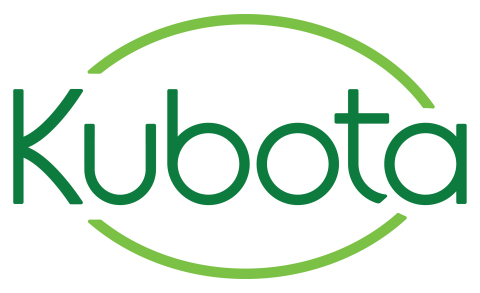Kubota Vision Announces Database Lock for Phase 3 Clinical Trial of Emixustat in Patients with Stargardt Disease and Expected Release of Top-Line Results in August 2022
Kubota Vision Announces Database Lock for Phase 3 Clinical Trial of Emixustat in Patients with Stargardt Disease and Expected Release of Top-Line Results in August 2022
SEATTLE--(BUSINESS WIRE)--Kubota Vision Inc. (“Kubota Vision”), a clinical-stage ophthalmology company and wholly-owned subsidiary of Kubota Pharmaceutical Holdings Co., Ltd. (Tokyo 4596), announced today the database lock for the phase 3 clinical trial of the investigational visual cycle modulator emixustat hydrochloride (emixustat) in patients with Stargardt Disease.
Kubota Vision previously announced that the trial was completed in June 2022, as the last patient underwent their last visit. This was followed by completion of data entry, confirmation of the accuracy and completeness of the database, and final sign-off by all investigators. Now that the database is locked, the datasets are being transferred to an independent statistical group, who will unmask patient treatment and analyze the data. Top-line results will be reported by Kubota Vision in August 2022.
Ryo Kubota, MD, PhD, Chairman, President, and CEO of Kubota Vision Inc., stated, “Database lock marks an important step towards being able to report the most important results from our phase 3 trial in Stargardt disease. We would like to thank all those who have been involved in this clinical trial over the years and are excited to soon be able to share the outcome of this trial of emixustat for the treatment of this blinding disease.”
About Stargardt Disease
Stargardt disease is a rare, genetically inherited disease that directly affects the retina of the eye, often resulting in the slow progression of vision loss in children. It may also be referred to as Stargardt macular dystrophy or juvenile macular degeneration and affects approximately 1 in 8,000 - 10,000 individuals worldwide.*1 The most common form of the disease is caused by a genetic mutation of the ABCA4 gene leading to the accumulation of toxic vitamin A byproducts (primarily A2E) in the retina, which results in the gradual deterioration of photoreceptors and vision. Symptoms of Stargardt disease typically appear during childhood or adolescence, but in some cases difficulty with eyesight and vision loss may not be identified until later in life.
Stargardt disease affects less than 150,000 patients in total in the U.S., Europe and Japan where it is recognized as an orphan disease. Currently, there are no known therapies that slow the advance of the disease, and it is recognized as a serious unmet medical need. Stargardt disease market is expected to grow to US$1,600M in 2027.*2
*1 Facts About Stargardt Disease, National Eye Institute. https://nei.nih.gov/health/stargardt/star_facts, accessed on 14 September 2018.
*2 WISEGUY RESEARCH CONSULTANTS PVT LTD Global Juvenile Degeneration (Stargardt Disease) Market Research Report- Forecast to 2027.
About Emixustat Hydrochloride
Emixustat modulates the visual cycle by inhibiting a critical enzyme of this pathway, retinal pigment epithelium protein 65 (RPE65). The visual cycle is the process by which vitamin A is recycled in the eye; vitamin A is crucial to the visual process. Slowing the visual cycle reduces the availability of vitamin A derivatives (11-cis- and all-trans-retinal) to form precursors of toxic A2E and related compounds. In addition, reducing the availability of 11-cis-retinal decreases retinal metabolic demands under dark conditions. Emixustat when delivered orally was found to be generally well tolerated in human clinical studies with delayed dark adaptation being the most common adverse event. Kubota Vision is exploring emixustat’s potential to stop or slow the progression of vision loss in patients diagnosed with Stargardt disease in an ongoing clinical study.
The FDA and EMA granted orphan drug designation to emixustat for the treatment of Stargardt disease. (See January 5, 2017 press release titled “Acucela Receives Orphan Drug Designation from the FDA for the Treatment of Stargardt Disease” and June 9, 2019 press release titled “Acucela Receives Orphan Designation from the EMA for Emixustat for the Treatment of Stargardt Disease”)
About Kubota Vision Inc.
Kubota Vision Inc. is a wholly owned subsidiary of Kubota Pharmaceutical Holdings Co., Ltd. (Tokyo 4596), committed to translating innovation into a diverse portfolio of drugs and devices to preserve and restore vision for millions of people worldwide. Kubota Pharmaceutical group’s development pipeline includes drug candidates for the treatment of diabetic retinopathy and Stargardt disease. The Company is also developing a handheld OCT device for the monitoring of neovascular retinal diseases, to be used directly by patients, and a wearable device for myopia control. https://www.kubotavision.com/; https://www.kubotaholdings.co.jp/en/
Cautionary Statements: https://www.kubotaholdings.co.jp/en/1/index.html
“Kubota Vision,” the Kubota Vision logo and “Kubota” are registered trademarks or trademarks of Kubota Vision Inc. or Kubota Pharmaceutical Holdings in various jurisdictions.
Contacts
Media and Investor Relations Contact:
Mikio Fukai
Corporate Planning Division
Phone: +81-3-6550-8928
Email: pr@kubotaholdings.co.jp
